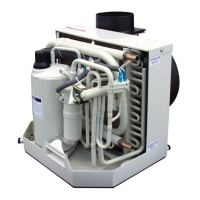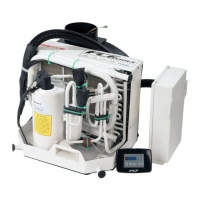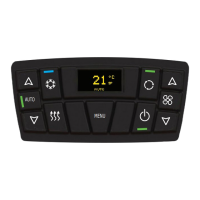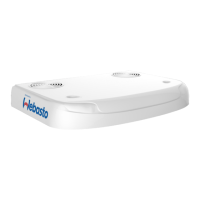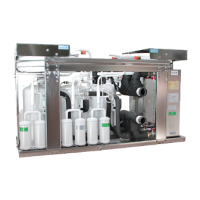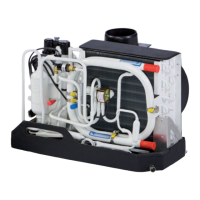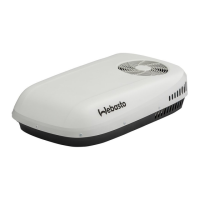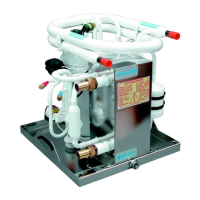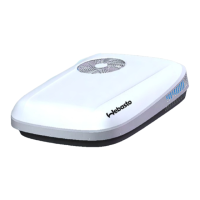Ducting
Good airflow is critical for the performance of the entire system. It is highly dependent on the quality of the ducting
installation. The ducting should be run as straight, smooth and taut as possible minimizing the number of 90
degree bends (two tight 90° bends can reduce airflow by 25%). If a transition box is used, the total area of supply
air ducts going out of the box should at least equal the area of the supply duct feeding the box. To calculate the
square inch area of a round duct, multiply the radius by itself (r
2
) and multiply that number by 3.1416(π). The
following is a summary of proper ducting connections:
1. Pull back the fiberglass insulation exposing the inner Mylar duct hose.
2. Slide the Mylar duct hose around the mount ring until it bottoms out.
3. Screw 3 or 4 stainless steel sheet metal screws through the duct hose into the transition ring. Make
sure to catch the wire in the duct hose with the heads of the screws. Use finish washers with the screws
if necessary. Do not use band clamps, as the hose will slide off.
4. Wrap duct tape around the ducting and ring joint to prevent any air leaks.
5. Pull the insulation back up over the Mylar to the ring and tape this joint.
6. Remove excess ducting and use the same connection method at the supply air grille.
All ducting should:
● Be insulated and appropriately sized for each application.
● Run as smoothly and taut as possible.
● Have as few bends or loops as possible.
● Be securely fastened to prevent sagging or chafing during vessel operation.
● Have all excess ducting lengths trimmed off.
● Not be flattened or kinked.
● Be properly protected against potential damage when routed through open areas or bulkheads.
Seawater Pump and Plumbing (Refer to page 31 for recommended flow rates and pump sizes)
Several guidelines should be followed during the installation of the seawater system. If the circulation pump is
centrifugal and not self-priming, it must be mounted so that it is always at least 1’ (305mm) below the water line
regardless of which tack the vessel is on. Pump must always be mounted per manufacturers recommendations,
however, the discharge must always be above the inlet. Pump head should be rotated toward the direction of water
flow. Install the seawater speed scoop intake as far below the water line and as close to the keel as
possible in any application, but especially on a sailboat, to keep the intake in the water when the boat
heels over so that air does not get into the system. The speed scoop intake must face forward and not be
shared with any other pump. A seawater strainer is mandatory between the shut off valve (seacock) and the pump
to protect the pump from any foreign matter. Failure to install a seawater strainer will void the pump warranty. The
seawater system should be installed with an upward incline from the speed scoop & seacock, through the strainer,
to the inlet of the pump, next to the inlet of the air conditioning unit's condenser coil. The discharge from the air
conditioning unit should run to the seawater outlet thru-hull fitting that should be located where it can be visually
inspected for water flow as close to the waterline to reduce noise. All hose connections should be secured using
double/reversed stainless steel hose clamps. Use thread sealer on all threaded connections.
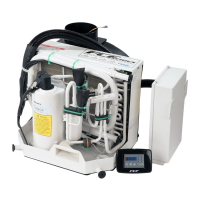
